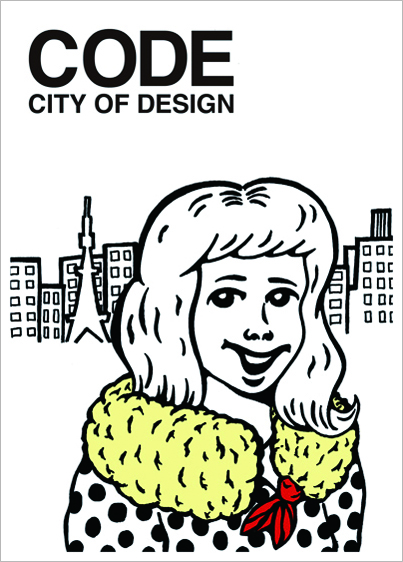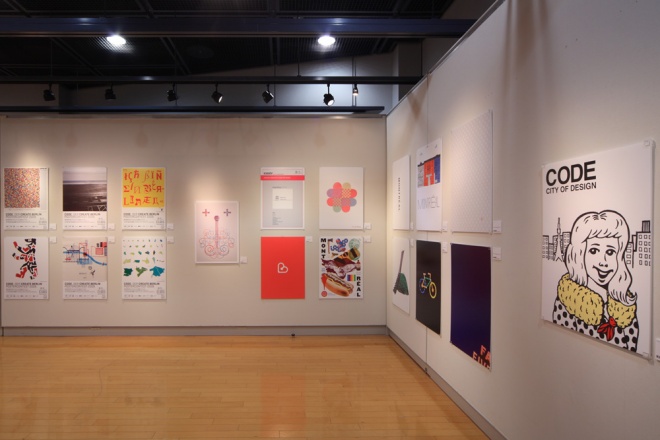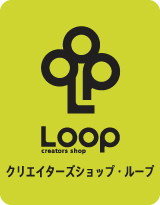- home>
- reports>
- news-report>
- Report: CODE | Poster Design Competition 2010 [NAGOYA]
| 2014.02.13 |
|
Report: CODE | Poster Design Competition 2010 [NAGOYA]

Ebifry (deep-fried prawn) Scarf
Design: Ryohei Sugiura / Illustrator
I wanted to make a poster with impact, one that will make people wonder, “what THAT?” and then look more closely. Also, since the selected posters will be exhibited in the seven Design Cities, I wanted to introduce Nagoya as unique Design City to a broad audience. As I was searching for an interesting identity, I realized that Nagoya has developed a singular food culture, so for the motif of my poster, I chose an illustration of a woman with an Ebifry scarf, featuring this special Nagoya treat.
It’s been two years since the City of Nagoya was appointed to a Design City of the UNESCO Creative Cities Network. During this period, the Network has facilitated exchanges with cities at home and abroad. Among them was the CODE*: International UNESCO Cities of Design Poster Competition 2010 held in 2010-2011. This project was first launched in collaboration with other appointed cities of design, providing us an opportunity to share a plethora of experiences and results. We believe this collaborative project contributed to a huge step forward in the promotion of future cooperation with cities around the world.
The works of designers and creative or cultural workers shape the identity of our cities.
The purpose of this competition was to produce images that illustrate what has made, makes or will make Berlin, Buenos Aires, Kobe, Montréal, Nagoya, Shanghai and Shenzhen unique.
Every metropolis has its own visual identity, an individual CODE. The focus of this competition was: What CODE defines each city? What is your image of each city?
Through this poster competition, together with thousands of creative minds internationally, we wanted to depict symbols, forms, colours and stories in the urban landscapes that make UNESCO Cities of Design.
*CODE:
An idea from Raban Ruddigkeit of the Berlin agency ® ruddigkeit corporate ideas. CODE stands for City Of DEsign, and for each individual UNESCO DEsign City’s own unique code.
About the Grand Prix: Ebifry (deep-fried prawn) Scarf
In a competition with the theme CODE (sign/symbol), for which many entries symbolized the meaning of “city”, the ebi-fry, or deep-fried prawn, won praise for the intuition of that choice. One of the essential aspects of design is the power to render abstract conceptions. Another is a sense of humor. This piece took the top prize because the competition focused on the city of Nagoya. The girl luxuriously wrapped in a scarf of ebi-fry (a food with a privileged position in Nagoya), with its strange feeling of the enigma of the gorgeous and the tawdry, symbolizes the culture of this city. [Editor’s note: Fried prawn is a favorite food of Nagoyans that was once a symbol of luxury.] From the point of view that the entity of Nagoya can be related to something humorous and ever changing, rather than something eternally grand, the winning piece expresses the crisp character of Nagoya’s vital populace. In that sense, it deftly depicts Nagoya now.
Post-competition Comments by the Judges
This occasion offered us an opportunity to have another look at where we live. It was very interesting for me to find that each and every one of the contestants has a different image of Nagoya. If I may venture to make one more comment, I would ask the contestants to be more aware of the scale of the paper stipulated for this project. /Shin Sobue
We must mention that many entries used stereotypical motifs, including the Golden Shachihoko (an imaginary fish set at the roof ridges of the symbolic Nagoya Castle). I believe that if an image, however stereotypical, precisely represents Nagoya, it’s quite all right to use it, for any number of years. Every work aroused my interest in how it successfully finds common ground with the present. /Akira Tatehata
This was a good competition, as it helped bring up memories of one’s own hometown. There have been many launches of projects directed outward, but the content of this competition served in the reexamination of one’s own position or something like the fundamental meaning of the place. /Masaaki Hiromura
In what way do you expect to depict your own town? How do you expect your town to be depicted or publicized? We shouldn’t be satisfied with the success of this one competition, which produced a lot of good artwork; we should continue to hold this kind of competition, like a treasure hunt. This will help us find something viable. /Shunyo Yamauchi
![]()
CODE: Poster Design Competition 2010 [Nagoya]
Theme: Identities of UNESCO Cities of Design
This was a collaborative project of the seven UNESCO Cities of Design as of June 2010: Berlin, Buenos Aires, Kobe, Montreal, Nagoya, Shanghai and Shenzhen. We collected posters that expressed the characteristic visual identities of each city. Seventy posters were selected, 10 for each city, and exhibited in each city and posted on various websites.
Target
Graphic designers, illustrators, photographers and artists active in each of the seven Cities of Design, including students and amateurs
Exhibition of Award-Winning Posters: Nagoya
Period: October 9-17, 2010
Venue: Design Gallery, International Design Center NAGOYA
Organizer: Creative Design City Nagoya Organizing Committee(City of Nagoya, International Design Center NAGOYA Inc., Nagoya Chamber of Commerce & Industry, Council of Chubu Design Organizations)
(First appearance: 2010 IdcN Annual Report (June, 2011) *Edited)
*Please visit Creative Design City Nagoya official website for all the award-winning works.
- Report: Nagoya, UNESCO City of Design Promotion Projects FY 2013
- Report: creators shop Loop(Fourth and Fifth Session)
- Report: 2013 Nagoya City Emergency Job Creation Projects
Creative Industry Cooperative Promotion Projects - Report: Corporate Support・Design Planning and Production FY 2013
- Report: IdcN Design Promotion FY 2013
- Report|Design Tour: Fun with the Classics at Yokiso’s Choshokaku
- Electric Media: The Age of Radio
- Ziggurat Design 30s “American Art Deco and Skyscrapers”
- “LIFE” | America: Birth of Photojournalism Magazine
- American AD of 1930s | Lifestyle and Products
- Electric Dream: Household Electric Appliance and Modern Life
- Posters from the 30s: Modern Life and Graphic Design














